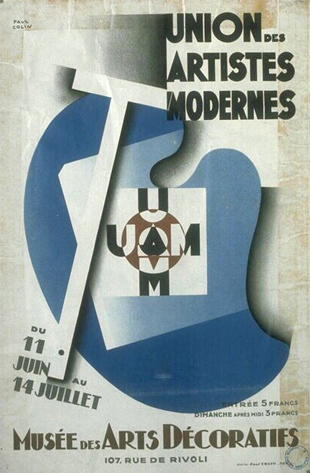UAM
The UAM (Union Des Artistes Modernes) was founded in May 1929 by an influential group of committed Modernist designers who had become disillusioned with the conservatism of the Societé des Artistes Décorateurs (SAD), from whom they split. SAD was largely geared to the expensive tastes of an affluent urban cultural elite, an outlook evident in the majority of lavish decorative displays seen at the 1925 Paris Exposition des Arts Décoratifs et Industriels. Members of the UAM included Robert Mallet-Stevens, Charlotte Perriand, Le Corbusier, Jean Puiforcat, Franz Jourdain, René Herbst, Pierre Chareau, and Louis Sognot. The group’s first exhibition, L’Art Moderne Cadre de la Vie Contemporaine, was held at the Musée des Arts Décoratifs, Paris, in 1930. In addition to the distinguished list of French Modernist participants, it also included the work of foreign designers such as Eileen Gray, Bart Van Der Leck, and Gerrit Rietveld. In 1934 UAM issued its first manifesto entitled Pour L’Art Moderne Cadre de la Vie as a strategic counter to the attacks being made against the Modernist avant-garde. It also played an important role in the 1937 Paris Exposition with its emphasis on sciences and techniques. After the Second World War the UAM re-established itself with the 1949 exhibition entitled Formes Utiles, Objets de Notre Temps. In 1950 Formes Utiles became an organization in its own right, mounting an annual exhibition. UAM was wound up in 1958.

